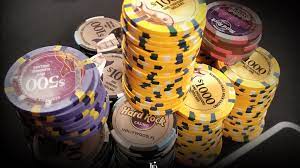On the surface, this may sound like a fairly straightforward example, but it’s actually quite the opposite.
Spending too much time thinking about what cards you’re going to play and how you’re going to play them doesn’t generally provide the best results. This may strike some people as a pretty simple concept, but it’s actually quite the contrary.
KR means that you want to be building a stack that can potentially win half the time, and that’s assuming the other players at the table are also building their stacks the same way. If everyone is just playing their chips the same way, you’re sitting in the middle with no way to get the money in as quickly as the big stack players.
If you want to be a big stack and find yourself in this position, you’ll need to take a completely different approach when you’re facing a smaller stack.
Smaller Stack SNG’s Are Lottery
In No Limit Hold’em, the strategies for playing against three-times-old-all-in players are the same for two-tabling. You’re looking to flop a setter out here, and if you don’t get ’em, you’re folding.
The problem is that you will very rarely get a huge hand, or an A and a K in the same situation. So, you have to adjust and become more selective in your starting hand selection.
New players will call with any two cards, but experienced players will usually only call with premium hands. The whole idea is that you want to make sure you’re playing quality hands preflop, rather than quantity.
Adjusting Your Hand Selection For Success
Once you identify that you’re either going to win the hand, or not, you need to start toning down the hands you’re playing. Getting caught up in chasing hands, or playing poor quality poker, is going to kill your bankroll.
If you want to be a successful player, you need to learn how to make quality decisions preflop, and that doesn’t involve chasing a low expectation hand. Quality decisions mean holding out for good hands, and calling/limping in with Sidney Pools.
In order to be profitable in small stakes games, you’ll have to be able to identify profitable hands to play. We don’t know when you’re going to hit the flop, so we can’t predict when we’re going to flop a monster or anything, but we can determine which types of hands have a better likelihood of hitting the flop than another hand.
Once you establish which players are playing better hands, and you have a better idea of what they have, you can take advantage of them. You’ll have to be playing quality hands, but thankfully, unlike BOTs and other looser players, you don’t have to play high card numbers.
Plus, there are always going to be players that aren’t playing properly, so you can occasionally steal a pot from them. They might get upset, but ultimately, their bad play cost you money. In a situation like that, a good pre-flop read is invaluable.
If you’re in the later positions and everybody checked to you, and you have a decent hand, you should limp in or come in with a raise. If you don’t flop a monster, and somebody bets at you, you should fold, unless the pot is a lot at your level of play.
Bonuses
You’ll make money faster putting a lot of hands in a pot, and you’ll be using this strategy for much bigger pots. Hands that are normally quite weak, because they’re part of a overall weak range, are much more profitable to play than typical ace high hands.
Tunnel vision
It’s easy to lose sight of the fact that you could be missing a lot of profitable opportunities to exploit, if you’re playing too tight. While you need to tighten up some points, in the early positions you don’t want to be playing too tight.
If you can play a hand like ace high or a good variation of ace high, you can play a variety of hands. You don’t have to play nearly as tight as you would in an ordinary cash game, in fact, you may want to play a little looser, yet still be fairly tight.
You have to have a fairly strong hand to play against most of the players in the lower positions, they’ll be working off a smaller pot and just going for draws. They’ll see less hands, but will still beplaying hands.
If you’re playing against a player in the higher positions, you want to at least be playing a hand, where you could probably take the pot with a raise.
